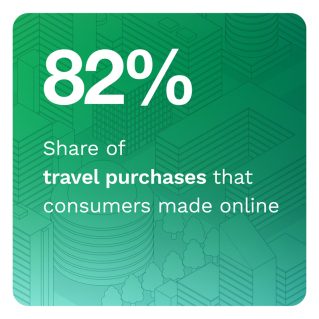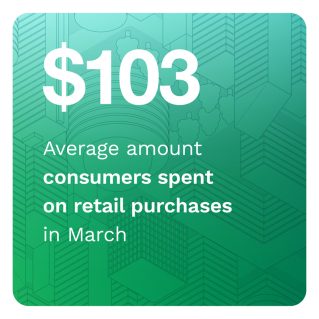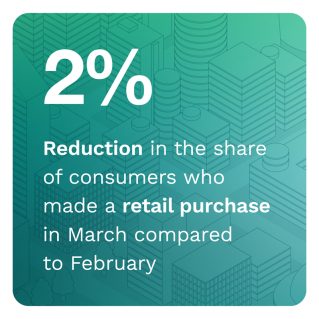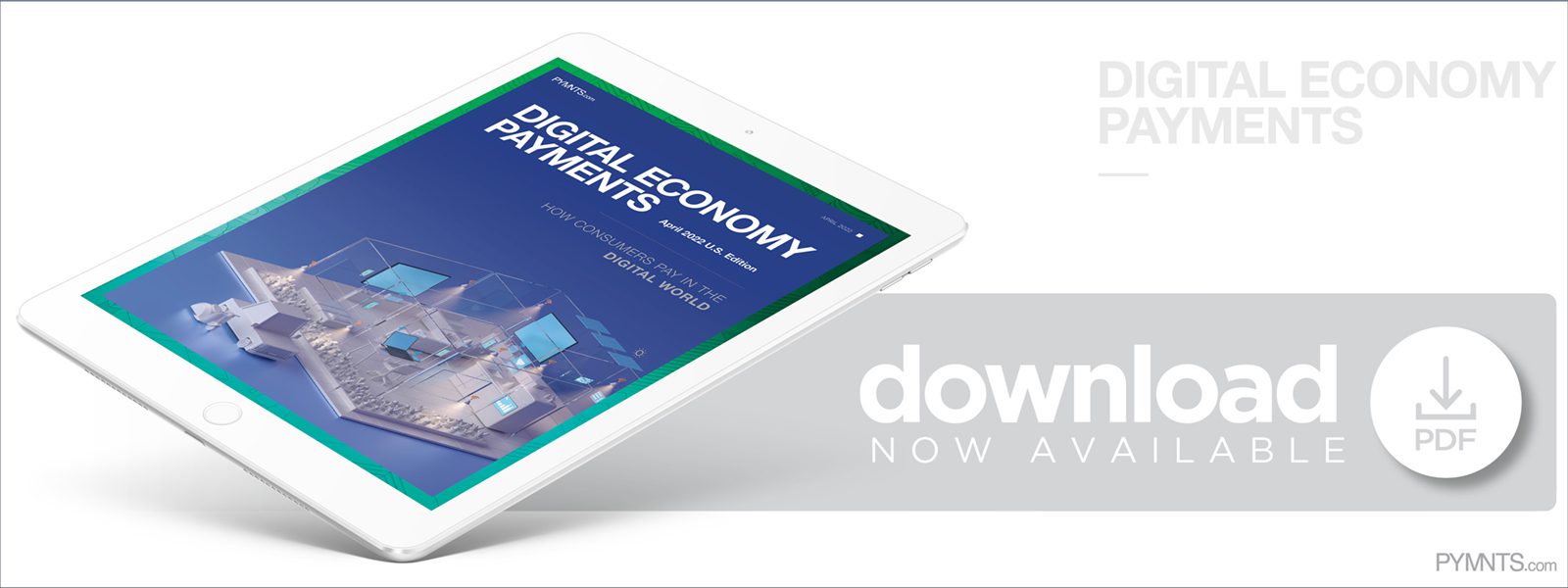New Data Show Consumers Are Buying Less, Spending More and Changing Habits

Consumers are buying less and spending more, according to recent PYMNTS research. The dollar has less buying power, and many consumers are restricting their spending. Inflation has significantly impacted Americans’ spending in every channel and category.  PYMNTS’ data finds that consumers spent more on groceries and retail items last month, and retail spending reached an all-time high. This could spell trouble for retailers if inflation continues and consumer spending trends down.
PYMNTS’ data finds that consumers spent more on groceries and retail items last month, and retail spending reached an all-time high. This could spell trouble for retailers if inflation continues and consumer spending trends down.
The share of consumers stating they shopped for groceries decreased from 89% in February to 88% in March, and retail shopping decreased from 62% to 60%, yet the average spend increased for each. Grocery spending rose by $11 to $110, and retail spending rose by $24 to $103. Meanwhile, restaurant purchasing also dropped, from 71% to 70%, and consumers’ average spending increased slightly by $1 to $40.
These are just a few of the findings detailed in the April 2022 U.S. Edition of Digital Economy Payments: How Consumers Pay In The Digital World. In this month’s report, PYMNTS surveyed 3,017 U.S. consumers to analyze their shopping behaviors and preferences as well as their go-to forms of payment. This survey was conducted between March 10 and March 14.
Other findings on consumer spending behavior include:
• Travel spending has seen a resurgence, and most purchases occur online. Pent-up demand for travel services was evident in March, as travel spending rose to historical levels and travel costs may be less volatile than those in other segments. This sector made a notable comeback: 19% of consumers purchased travel services in March, an all-time high for the series. Consumers’ average travel spending was $363, a lower figure than previous months.
• Consumers are embracing digital wallets for travel purchases. According to our findings, the travel segment leads in online purchasing: Consumers made 82% of travel purchases online. Consumers are also turning to digital wallets to help streamline their payments experiences when booking travel-related services.
Rather than use a debit or credit card directly, many consumers leverage their digital wallets when making travel purchases online and in person. Our data shows that consumers made 17% of all travel purchases using PayPal and other digital wallets. In comparison, consumers used PayPal and other digital wallets in just 3.6% or less of all other retail purchases.
• While digital wallets have gained popularity, debit cards still hold a dominant share in grocery and retail purchasing. In March, consumers made 42% of grocery sales using debit cards, representing about $41 billion in sales. Consumers used digital wallets for just 6% of sales. While PayPal and other digital wallets have meaningful shares of sales made through online channels, a lack of in-store usage brings the average down.
To learn more about how consumers shopped last month, download the report.
